What is the Difference Between Bay and Bow Windows?

Windows can really change how a house looks and feels. Two types that often catch people’s eye are bay and bow windows. These aren’t your everyday flat windows. They stick out from the wall and add something special to a home. But what makes them different from each other? Many homeowners aren’t sure. That’s why we’re here to clear things up.
In this article, we’ll take a good look at the difference between bay and bow windows. We’ll explain what sets them apart, what they’re good for, and why you might want one in your house. Whether you’re thinking about new replacement windows or just curious, you’ll learn all about these unique window styles.
Bay Windows
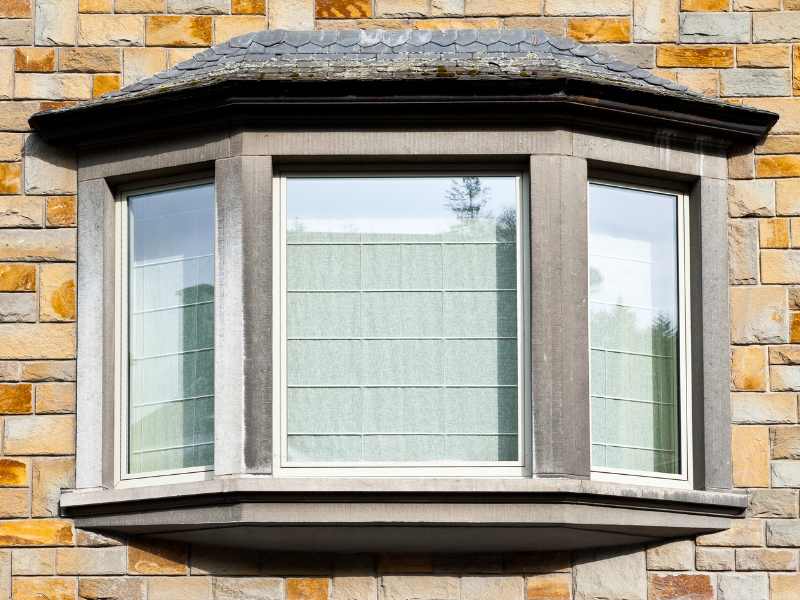
Bay windows have long been a popular choice for homeowners looking to add character and charm to their properties. A bay window typically projects outward from the exterior wall of a building, creating a small alcove within the room. This design is not only visually striking but also functional, offering several advantages.
Definition and Features
A bay window is essentially a set of three or more windows arranged to form a projecting unit. The central window is usually larger than the two side windows, creating a panoramic view of the outdoors. The side windows are often angled, which helps to extend the interior space and enhance the overall design.
Bay windows come in various styles, including:
- Box Bay Windows: These are characterized by a rectangular projection with flat front and side windows.
- Oriel Bay Windows: Typically found in older Victorian-style homes, these are often supported by brackets or corbels and extend from the upper stories of a building.
- Compass Windows: A less common style, these feature a rounded design and can resemble a compass rose.
Benefits of Bay Windows
Bay windows are celebrated for their ability to create additional interior space. This extra space can be used for various purposes, such as a cozy reading nook or a built-in window seat. Additionally, bay windows allow for an abundance of natural light, brightening up the room and making it feel more spacious.
The architectural style of bay windows adds a distinctive touch to your home. They can complement various design themes, from traditional to contemporary, and enhance the overall curb appeal. Their angular lines and large glass panes offer a modern twist while maintaining a classic appeal.
Bow Windows

Bow windows, on the other hand, present a softer, more rounded appearance compared to their bay counterparts. They are designed to create a graceful curve along the exterior wall, which provides a unique aesthetic and several practical benefits.
Definition and Features
A bow window typically consists of four or more window panels arranged in a gentle curve. Unlike bay windows, which are angular, bow windows feature a smooth, rounded projection. This design allows for a panoramic view of the surroundings and a seamless transition from the interior to the exterior space.
Bow windows come in different styles, including:
- Four-Lite Bow Windows: These feature four window panels arranged in a curved formation.
- Five-Lite Bow Windows: A more extended version with five window panels for an even wider view.
- Six-Lite Bow Windows: Offering the broadest view, these windows include six panels and create a dramatic effect.
Benefits of Bow Windows
Bow windows are known for their elegant, curved design, which adds a sophisticated touch to any home. The rounded shape of bow windows allows for a panoramic view, providing a broader perspective of the outdoors. This design also creates a sense of openness and fluidity, making the room feel more expansive.
Similar to bay windows, bow windows allow for increased natural light, brightening up the interior space. However, the gentle curve of bow windows can provide a more uniform distribution of light throughout the room. The graceful design also adds a unique visual appeal, making bow windows a standout feature in any architectural style.
Key Differences Between Bay and Bow Windows
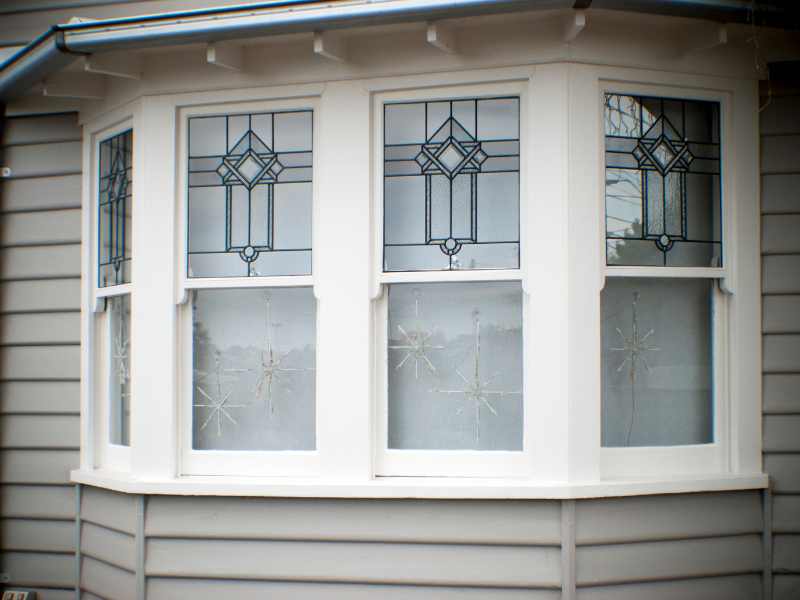
While bay and bow windows share some similarities, such as providing additional space and natural light, they have distinct characteristics that set them apart.
Structural Differences
One of the primary differences between bay and bow windows is their structural design. Bay windows typically consist of three or more windows arranged at angles to create a projecting unit. The central window is often larger, while the side windows are angled to form a distinctive shape. This design results in a more angular appearance and a noticeable projection from the exterior wall.
In contrast, bow windows feature a curved design with four or more window panels arranged in a gentle arc. This creates a smooth, rounded projection that seamlessly blends with the exterior wall. The curved shape of bow windows offers a more fluid and continuous appearance, contrasting with the more angular lines of bay windows.
Functional Differences
Both bay and bow windows offer increased interior space and natural light. However, the way they achieve these benefits differs. Bay windows provide additional floor space by projecting outward, creating a small alcove within the room. This extra space can be utilized for various purposes, such as a reading nook or a built-in window seat.
Bow windows, with their curved design, create a broader and more open view of the outdoors. The smooth curve of the window allows for a panoramic perspective, enhancing the sense of openness within the room. While both window types improve natural light, the curved design of bow windows can offer a more uniform distribution of light.
Installation Considerations
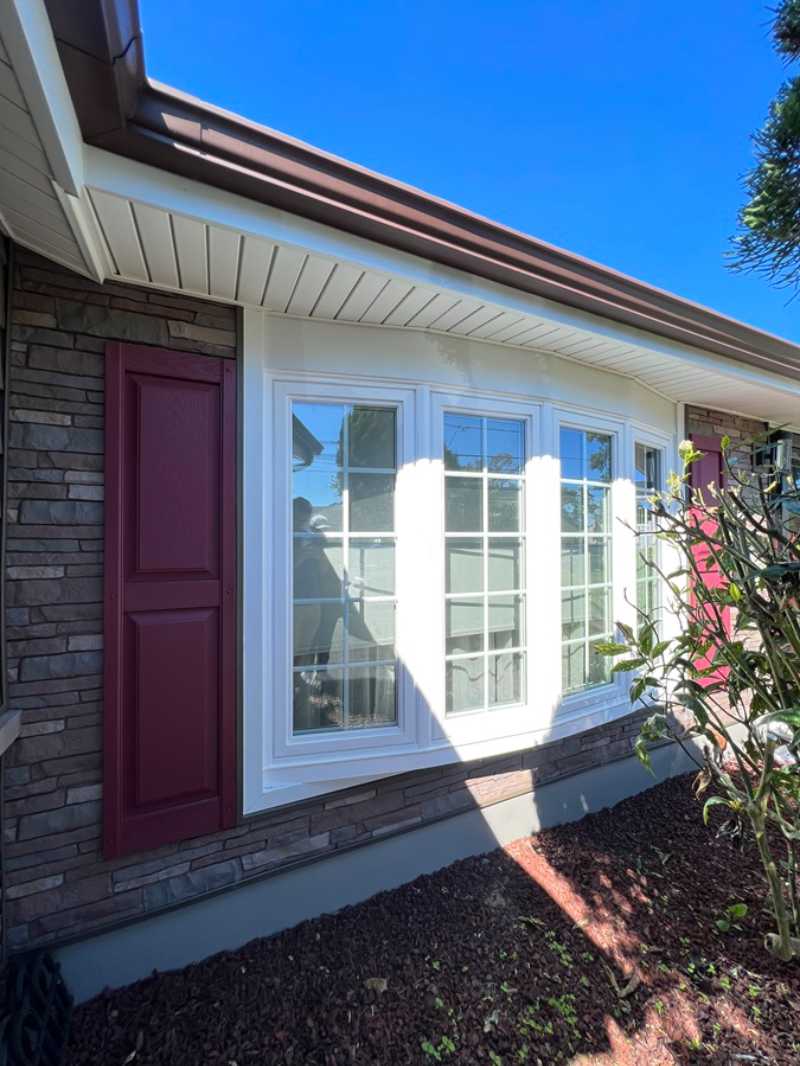
When choosing between bay and bow windows, it’s essential to consider the installation requirements and potential impact on your home’s structure.
Bay Window Installation
Bay window installations typically involve creating a projecting unit that extends from the exterior wall. This may require modifications to the existing wall structure, including adjustments to the soffit and possible reinforcement of the window opening. Bay windows often need additional support to ensure stability and prevent sagging.
Bow Window Installation
Bow window installations involve creating a curved projection along the exterior wall. This design requires precise measurements and careful consideration of the wall space. Bow window installations may also require modifications to the exterior wall and additional support to maintain the integrity of the curved shape.
Both types of windows may require professional installation to ensure proper fit and function. Consulting with a window specialist can help you determine the best approach for your home and ensure a successful installation.
Architectural Styles and Applications
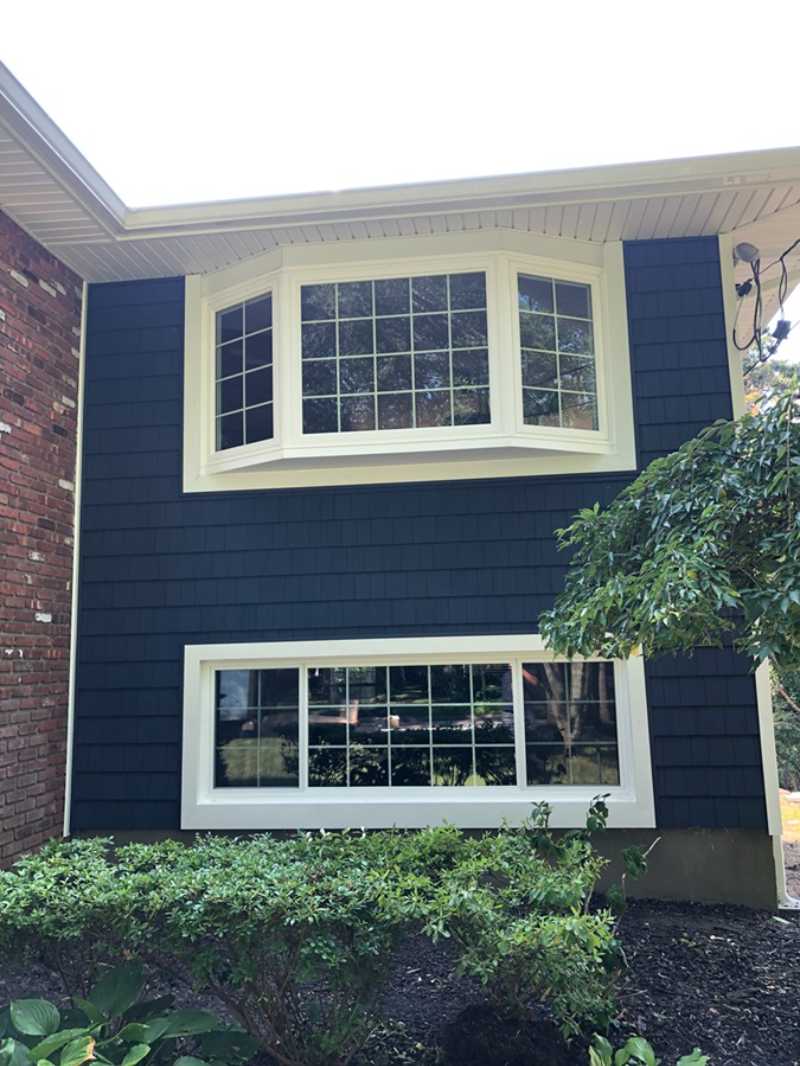
Bay and bow windows can complement various architectural styles, enhancing the overall design of your home.
Bay Windows
Bay windows are versatile and can suit a range of architectural styles. They are often found in Victorian-style homes, where their angular lines and projecting design add a classic touch. Bay windows can also work well in modern and contemporary homes, where they provide a striking contrast to sleek lines and minimalist designs.
Bow Windows
Bow windows, with their graceful curve, are well-suited to traditional and contemporary architectural styles. Their elegant design adds a touch of sophistication to various home styles, from classic to modern. Bow windows can enhance the appearance of both traditional and contemporary homes, providing a unique visual element and a panoramic view.
Energy Efficiency and Window Treatments
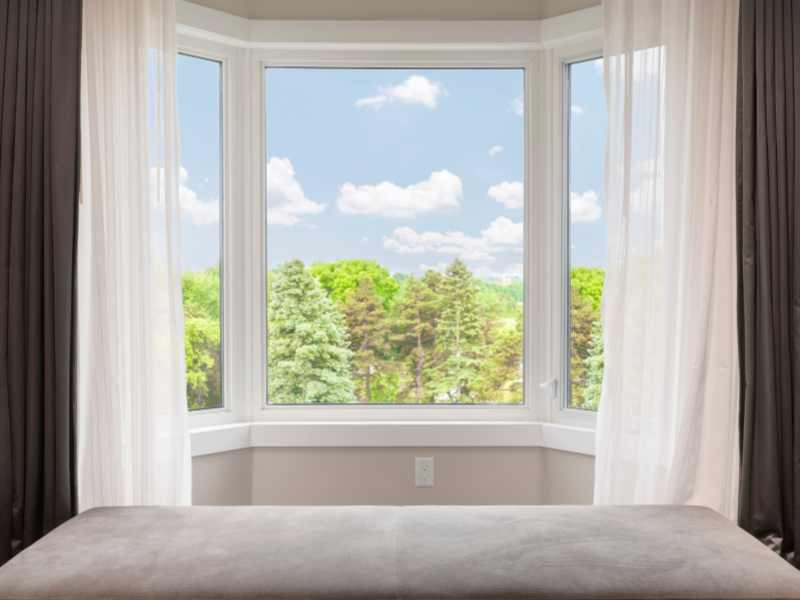
Energy efficiency is a crucial consideration when selecting windows for your home. Both bay and bow windows can be designed to meet energy efficiency standards, including options for double-paned glass and low-E coatings. These features help to reduce heat loss and improve insulation, making your home more comfortable and energy-efficient.
When it comes to window treatments, both bay and bow windows offer opportunities for customization. Consider options such as curtains, blinds, and shades to enhance privacy and control light levels. The choice of window treatments can also impact the overall aesthetic of the room, complementing the unique design of your bay or bow windows.
Comparing Bay and Bow Windows with Other Window Types
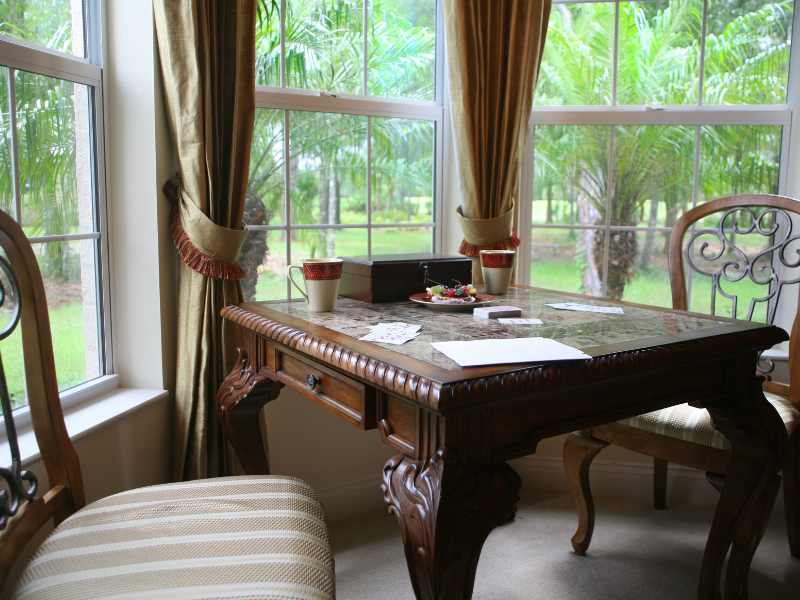
Bay and bow windows are well-known for their distinct looks and benefits, but how do they compare with other common window types like picture windows, casement windows, and double hung windows?
Overview of Different Window Types
Before diving into comparisons, let’s briefly review some popular window types:
- Picture Windows: These large, fixed windows are designed to offer expansive views and abundant natural light. They serve as a central picture window, framing outdoor vistas with large glass panes. Picture windows are ideal for creating a focal point in a room and enhancing the view.
- Casement Windows: Hinged on one side, casement windows open outward, much like a door. This design allows for excellent ventilation and fresh air flow, making them a practical choice for areas needing increased airflow.
- Double Hung Windows: Featuring two sashes that slide vertically, double hung windows are versatile and easy to clean. They provide flexibility in ventilation and fit well in various architectural styles.
Bay and Bow Windows vs. Picture Windows
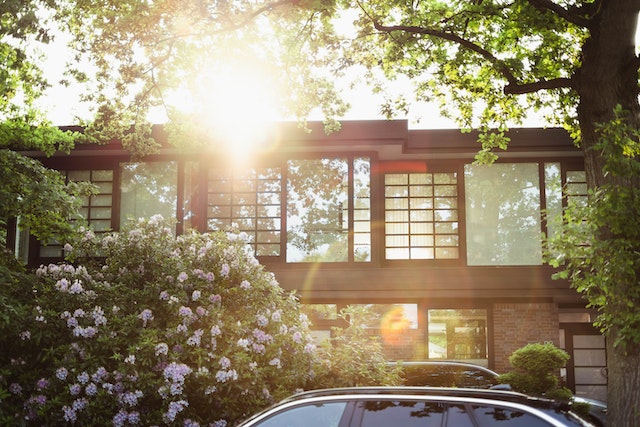
Design and Functionality
Bay and bow windows stand out with their unique designs. Bay windows consist of a central window flanked by two angled side windows, creating a projecting unit that extends from the exterior wall. This projection adds extra floor space inside and allows for panoramic views. Bow windows, on the other hand, feature a series of windows arranged in a smooth, curved formation, offering a more rounded projection.
In contrast, a large picture window is flat and fixed, creating an unobstructed view of the outdoors. It doesn’t protrude from the exterior wall like bay or bow windows but serves as a central picture window to enhance natural light and provide a clear view.
Installation Considerations
Installing a bay window involves creating a projection from the exterior wall, which may require structural modifications such as adjusting the soffit and ensuring proper support. In contrast, bow window installations require precise measurements to accommodate the curved design and may involve additional reinforcement to support the rounded shape. The installation of a picture window is typically more straightforward, focusing on ensuring a proper seal and fit within the existing window opening.
Bay and Bow Windows vs. Casement and Double Hung Windows
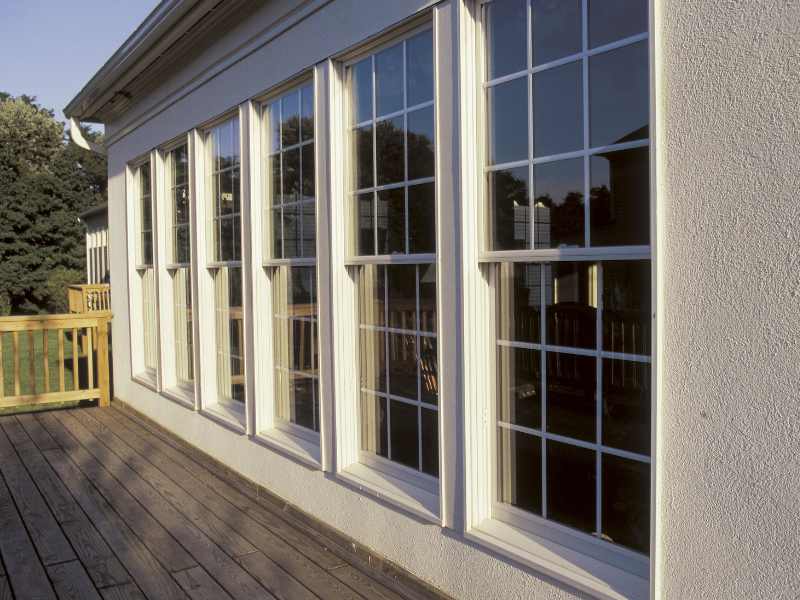
Ventilation and Airflow
Casement windows and double hung windows offer significant advantages in ventilation. Casement windows open outward, providing maximum airflow, while double hung windows allow you to open both sashes independently, offering flexible ventilation options. In contrast, bay and bow windows are often fixed or have limited opening options, focusing more on creating space and light rather than ventilation.
Aesthetic Impact
The aesthetic impact of bay and bow windows is distinct from other window types. Bay windows protrude farther from the exterior walls, creating a dramatic architectural feature with their angular lines. Bow windows, with their curved projection, add a soft, graceful touch. Casement windows and double hung windows offer more traditional and less pronounced architectural features, providing a more classic look compared to the bold presence of bay and bow windows.
Installation Considerations
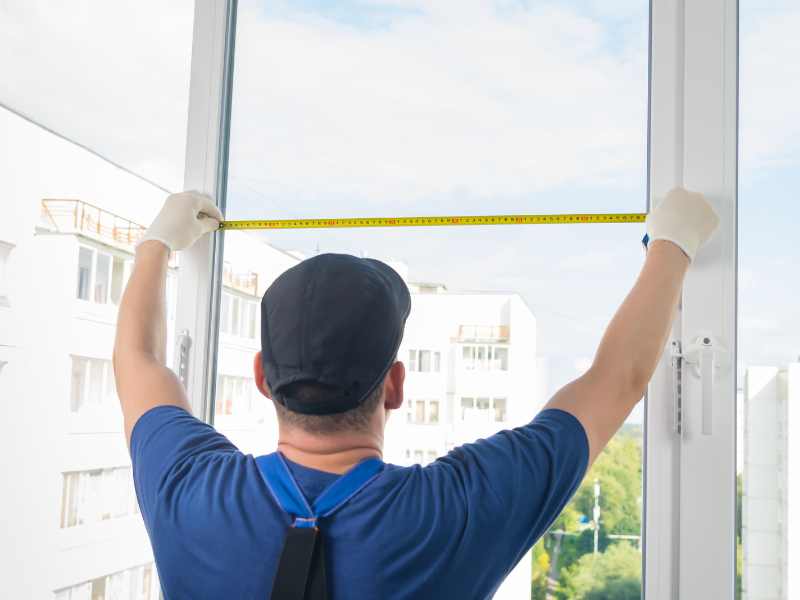
Installation Complexity
The installation complexity of bay and bow windows can be higher than that of standard windows. Bay window installations require modifying the exterior wall and ensuring adequate support for the projecting unit. This often involves adjustments to the soffit and possibly reinforcing the wall structure to handle the additional weight. For homes with an extended hip roof, additional structural modifications may be necessary to ensure proper support and alignment of the bay or bow window.
Bow window installations require careful alignment and support due to their curved shape. Proper installation is crucial to maintain the integrity of the window and prevent structural issues. Both types of windows may need professional installation to ensure a perfect fit and function.
Structural Impact
Bay and bow windows can impact your home’s structure. Bay windows may require a soffit tie-in to secure the projection and ensure stability. Bow windows, with their curved design, may necessitate additional support to maintain the structural integrity of the exterior walls. Both types can alter the exterior space of your home, adding to its architectural charm and functionality.
Energy Efficiency and Maintenance
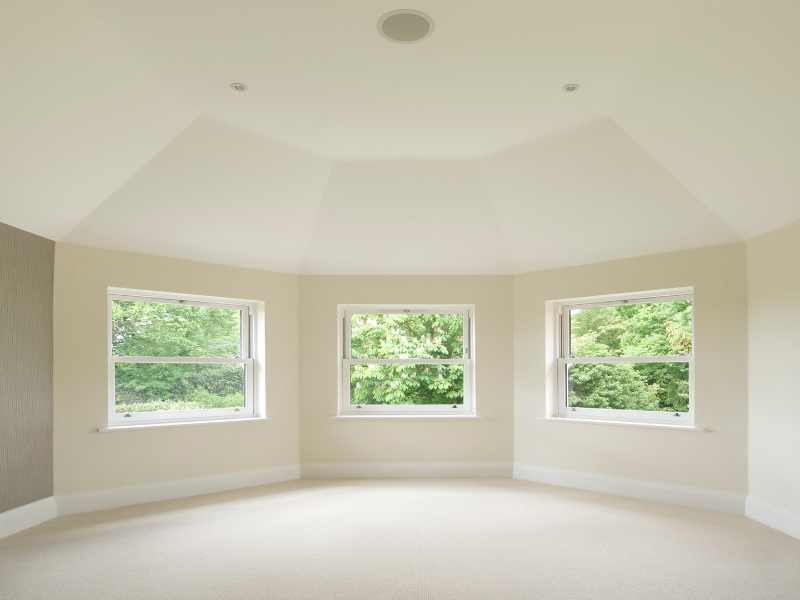
Energy Efficient Windows
Both bay and bow windows can be designed to be energy-efficient. Modern energy efficient windows can include features such as double-paned glass and low-E coatings, similar to those available for picture and casement windows. These features help reduce heat loss and improve insulation, making your home more comfortable and energy-efficient.
Maintenance Needs
The maintenance needs of bay and bow windows vary compared to other window types. Large glass panes in bay windows may require more frequent cleaning compared to the smaller panes of double hung windows. Bow windows, with their curved design, may present challenges in cleaning and maintenance, but their aesthetic appeal often outweighs these concerns.
Choosing the Right Window Style
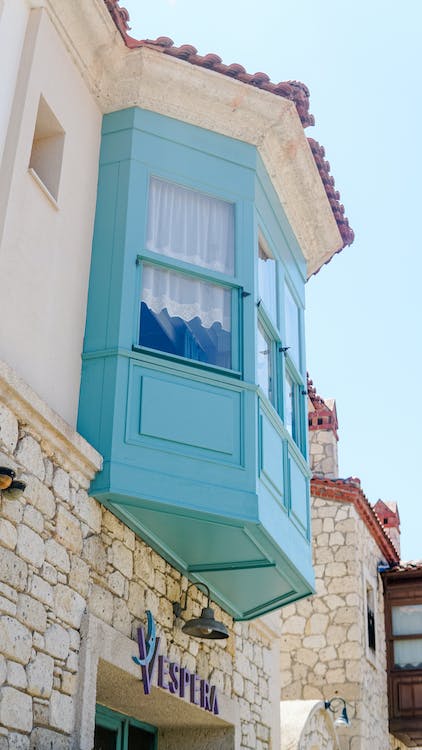
Architectural Compatibility
When selecting the right window style, consider your home’s architectural design. New bay windows can enhance the curb appeal of Victorian style houses with their classic, angular lines. On the other hand, bow windows can complement modern or contemporary designs with their graceful curves. Both window types can add character and sophistication to your home.
Customization Options
Explore the customization options available for a bay or bow window. For instance, circle bay windows and full bay windows offer different shapes and sizes to fit your design preferences. Bay window types can vary, including options like compass windows and box bay windows. Consider how these options can be tailored to suit your needs, whether you want a large bay window for more space or a flat front window for a streamlined look.
Final Remarks
In summary, bay and bow windows each offer distinct advantages and aesthetic appeal. Bay windows provide angular lines and additional interior space, making them a popular choice for creating cozy nooks and enhancing architectural style. Bow windows, with their curved design and panoramic view, offer a graceful touch and a broader perspective of the outdoors.
When choosing a bow or bay window, consider factors such as architectural style, installation requirements, and the desired impact on natural light and interior space. Consulting with a window specialist can help you make an informed decision and ensure a successful installation that enhances your home’s beauty and functionality.
For personalized advice and expert guidance on bay and bow windows, contact Fort Worth Window and Door Solutions today. Explore the various window types and styles available to find the perfect fit for your home’s design and your personal preferences.
